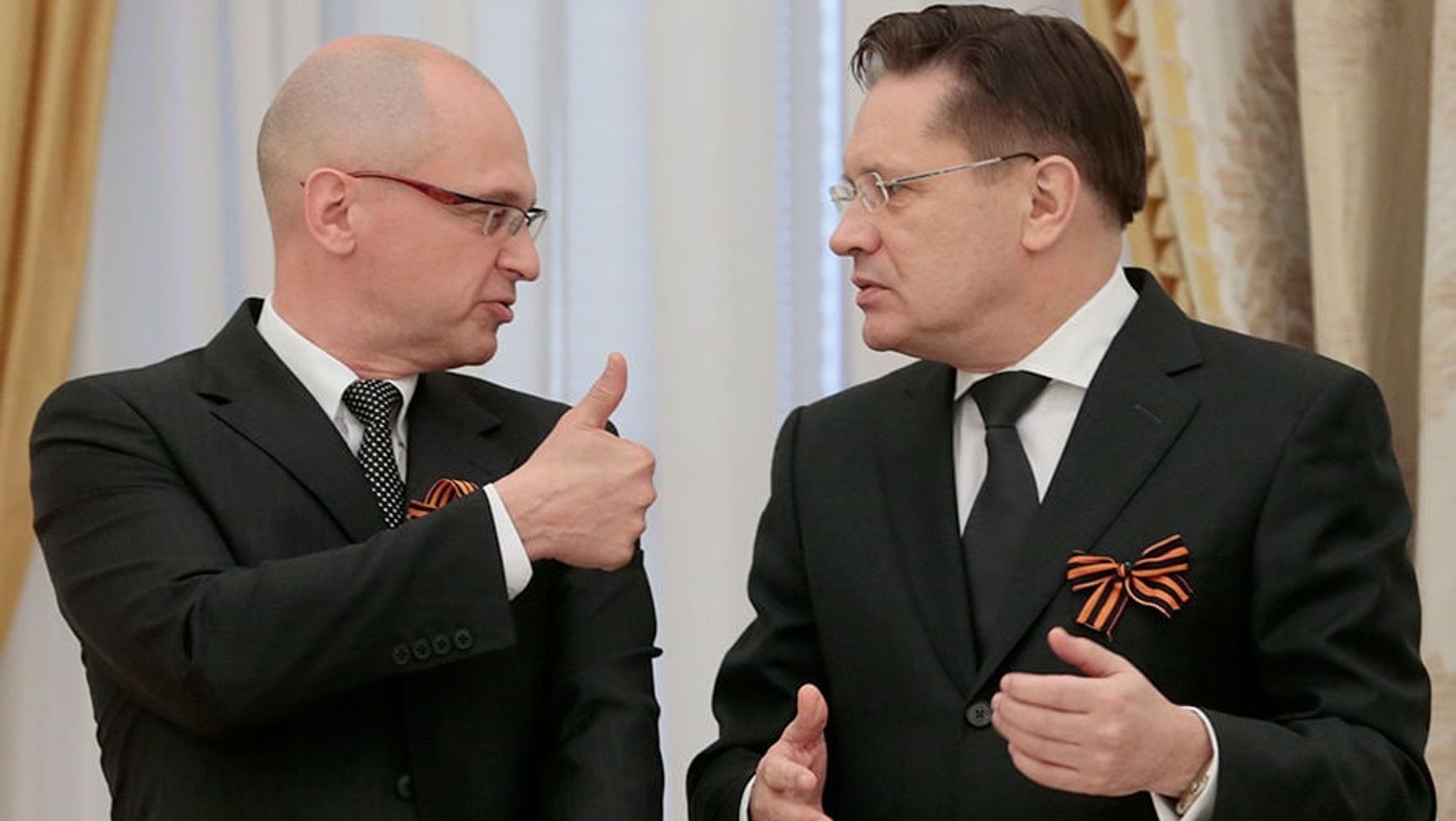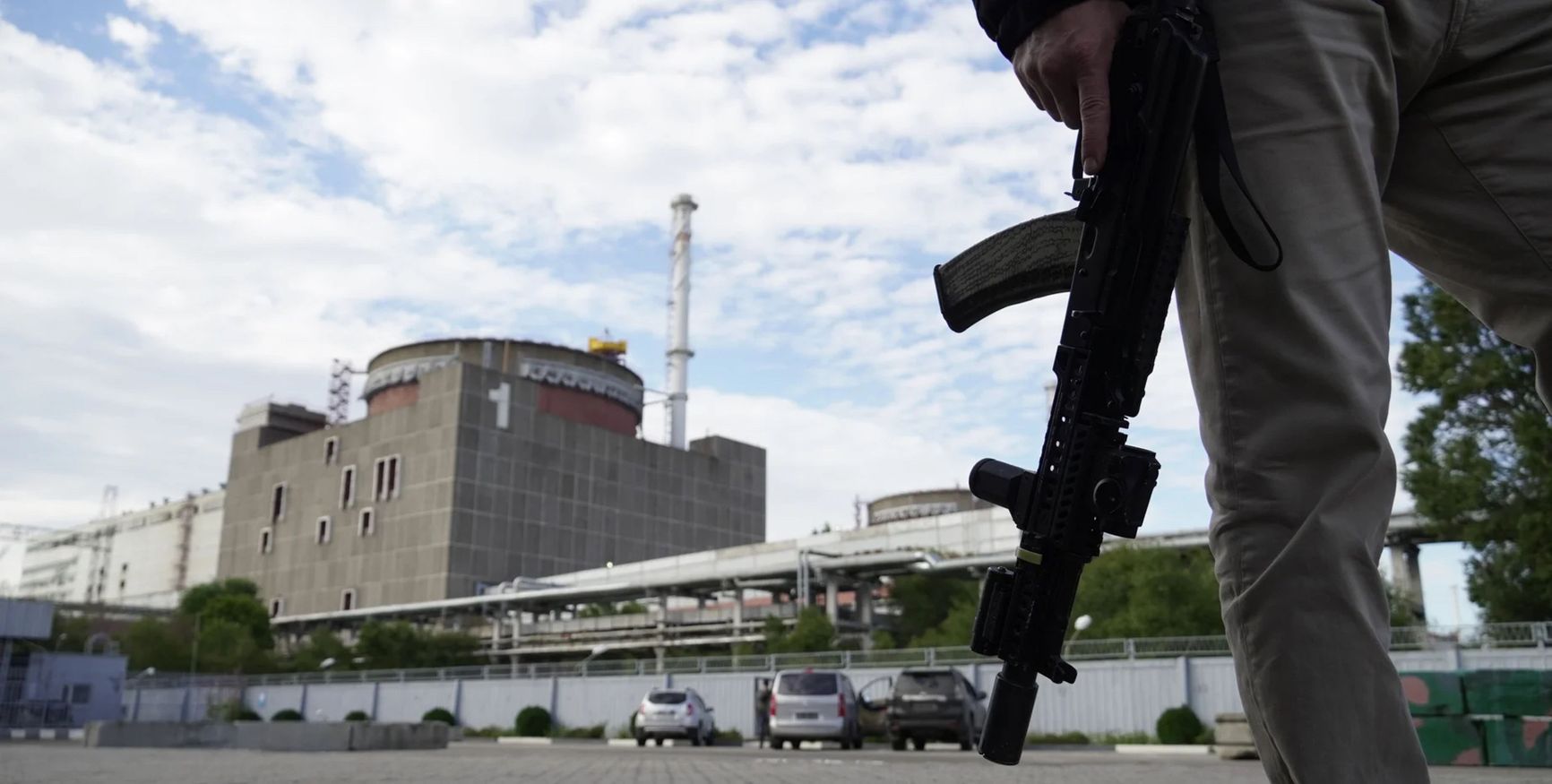

On Oct. 30, the IAEA reported that Europe’s largest nuclear facility has been pushed to the brink of disaster as a result of the war in Ukraine. Power lines supplying the Zaporizhzhia Nuclear Power Plant have been destroyed, and Ukrainian officials suspect that Russia plans to connect the ZNPP to its own energy grid. Experts believe that while the plant remains idle, it is relatively safe, but reconnecting it amid active hostilities could pose a serious nuclear safety risk. The facility is already in poor condition, and with a shortage of staff, maintaining safety in wartime conditions will be doubly difficult.
Content
A convenient blackout
Hooking it up to Russia
Securing water
What's the danger?
Under-sanctioned
Russia’s full-scale invasion of Ukraine has created a new kind of threat: nuclear power plants caught in the middle of an active war zone. At the end of February 2022, Russian troops briefly occupied the Chernobyl exclusion zone, ignoring expert warnings. Moscow’s military not only endangered the decommissioned plant’s facilities, but also spread radioactive particles beyond the exclusion zone as heavy military vehicles stirred up dust contaminated with radionuclides.
Then, during the night of March 3–4, 2022, Russian forces seized the operational Zaporizhzhia Nuclear Power Plant (ZNPP), the largest in Europe. With six reactors, the ZNPP is capable of generating a total of about 6,000 megawatts, enough to meet the daily energy needs of a small country such as Denmark.
The plant played a key role in ensuring Ukraine’s energy independence by reducing its reliance on Russian gas, thereby allowing the country to export electricity to Europe. In October 2022, Ukrainian Energy Minister Herman Halushchenko said that connecting the Zaporizhzhia plant to the EU’s unified energy system would enable Ukraine to export two to three gigawatts of electricity to the European Union.
A convenient blackout
The seized plant gradually began to deteriorate. After power lines were destroyed in the fighting, the ZNPP suffered repeated blackouts. By early 2024, the facility had experienced eight complete power outages and one partial one, with electricity supplied through a single transmission line.
The situation worsened after the destruction of the Kakhovka Dam in the summer of 2023, which led to the rapid drying of the Kakhovka Reservoir, previously a cooling source for the Zaporizhzhia reactors. Under these conditions, by April 2024 the occupying forces had shut down all six reactor units.
In July 2025, the Ukrainian state company Energoatom reported that a Russian airstrike had destroyed the last transmission line supplying power to the Zaporizhzhia plant. The blackout forced the facility to switch to its own diesel generators, increasing the risk of accidents. The line was later restored, but another power disruption that started from Sept. 23 still has not been resolved.
Constant emergencies and the lack of transparency in the occupied territory, where Ukrainian specialists have no access and the International Atomic Energy Agency (IAEA) mission faces major obstacles, have caused deep concern among experts and politicians. On Sept. 30, Volodymyr Zelensky said the situation at the plant had become critical. According to the Ukrainian president, the facility had been powered by diesel generators for an entire week, but “the generators and the plant are not designed for that and have never operated in such a mode for so long.” In this tense atmosphere, The Guardian even ran a piece comparing the situation at the Zaporizhzhia plant to the circumstances surrounding the Fukushima disaster in Japan.
Ukrainian radiation safety expert Oleksandr Kupnyi, who previously worked at the Zaporizhzhia Nuclear Power Plant, told The Insider that a catastrophic scenario is unlikely under current conditions.
“Blackouts at the Zaporizhzhia plant don’t pose a serious accident risk because, since the start of the occupation, the Russians have installed 18 to 20 high-capacity diesel generators there. They can supply as much fuel as needed. Rosatom will make every effort to show the IAEA what reliable partners they are and how capable they are of ensuring nuclear safety,” Kupnyi explained. “During the last blackout, six or seven generators were in operation and the rest were on standby. Besides, the plant has not been working for more than two years and is in cold shutdown — the reactor core is no longer hot, so a meltdown under these conditions is impossible.”
The reactor core is no longer hot, so a meltdown under these conditions is impossible.
For her part, Ukrainian nuclear energy expert Olha Kosharna also believes that the generator system provides a fairly reliable safeguard against accidents (some of the generators were purchased from Japan, drawing on the Fukushima experience). It will have to be good enough, she says, as the occupation authorities are in no hurry to restore the plant’s external power supply.
“Russia deliberately damaged the line about a kilometer and a half from the Zaporizhzhia plant and has not repaired it, even though the work would take just a few hours. They aren’t doing it because they want to connect the plant to the Russian power grid,” Kosharna said. Indeed, there is good reason to believe that the decision to reconnect the nuclear plant has already been made at the highest level in Moscow.
Hooking it up to Russia
In December 2024, Sergei Kiriyenko, first deputy chief of staff of the Russian presidential administration, who oversees the occupied territories of Ukraine, visited the Zaporizhzhia plant. He met with the occupation management of the facility and called for preparations to restart all reactor units at full capacity by the end of 2025.
For a long time, from 2005 to 2016, Kiriyenko served as CEO of the state corporation Rosatom. The current head of the company, Alexei Likhachev, is his protégé. The two have known each other since their Komsomol days and worked together in Nizhny Novgorod in the 1990s. It is therefore clear that the task set by Kiriyenko will be treated as a top priority.

Sergei Kiriyenko and Alexei Likhachev
It is also worth noting that Rosatom not only manages the Zaporizhzhia plant but is responsible for energy distribution across all occupied territories except Crimea. According to a report by the environmental project Bellona, since August 2023 electricity supply in the occupied areas (Luhansk region, parts of Donetsk, Kherson, and Zaporizhzhia regions) has been handled by a Rosatom-controlled entity called Unified Purchaser LLC, which was created a month earlier. It is 99% owned by Atomenergosbyt and 1% by Atomenergosbyt Business LLC, both of which are Rosatom subsidiaries.
After Kiriyenko’s visit to the Zaporizhzhia plant, Ukrainian sources reported that starting in the winter of 2025, Russian occupation authorities began rapidly building power lines from Russia’s Rostov region toward the occupied part of Zaporizhzhia region, where the nuclear plant is located. By May, most of the work had been completed. Construction of the transmission line is overseen by the Black Sea Regional Directorate of Unified Energy System of Russia.

A power line laid through the occupied territories of Zaporizhzhia and Donetsk regions
Greenpeace
The construction of these lines has also been confirmed by satellite monitoring data from Greenpeace. The images show that the lines run through the occupied cities of Mariupol, Melitopol, and Berdyansk. Connecting the nuclear plant to Russia’s power grid would mean effectively stealing it from Ukraine and removing it from the Ukrainian energy system.
Securing water
As early as May 2025, IAEA Director General Rafael Grossi dismissed the idea of restarting the Zaporizhzhia plant as unrealistic. He said that “there is no water for cooling or stable electricity supply,” both of which are necessary for its operation. “Although Russia wants to restart the plant, this is not possible in the near future,” Grossi stressed.

IAEA Director General Rafael Grossi
However, Russian authorities have been working intensively to resolve these problems. Ukrainian nuclear expert Oleksandr Kupnyi believes that even without water from the Kakhovka Reservoir, restarting the plant is technically feasible: “To launch one or two units, there is enough water in the cooling pond and two cooling towers. They can also replenish the pond using water from wells.”
Russian trade publications have also reported that Rosatom has begun building a floating modular pumping station that would allow water from the Dnipro River to be pumped into the plant’s cooling pond — the reservoir serving the Zaporizhzhia Nuclear Power Plant.
Greenpeace Ukraine expert Shaun Burnie believes that Rosatom may be able to start up one reactor at this stage, and Kupnyi agreed that it is likely technically feasible to restart one or two units, even if the process would be extremely complicated. Notably, all six reactors at the plant are currently loaded with American-made Westinghouse fuel, which Rosatom has no right to use.
It may be possible to restart one or two reactor units, but it would be an extremely complex process
“They won’t risk clashing with the Americans over this, so they’ll have to unload the fuel, then bring in and load their own. It would be transported across the occupied territories, though they don’t need rail convoys for that — regular trucks are enough. Ukraine could try to interfere, but any strike on such a shipment would be seen as nuclear terrorism, so I don’t think anyone would take that risk,” Kupnyi explained before adding: “By the way, it’s unclear where they would store the spent American fuel.”
Restarting the nuclear plant is not merely a potential propaganda move for the Kremlin. Sergei Vakulenko, an expert at the Carnegie Berlin Center, told The Insider that connecting the Zaporizhzhia plant to the Russian power grid is a realistic scenario with significant practical value for the economies of the territories occupied by Russia: “Electricity is always in demand, and Tavria and Crimea have to be supplied from somewhere.”
According to a report by Bellona, restarting even one reactor unit at the Zaporizhzhia plant would cut electricity purchases from other sources by nearly half, thus reducing the amount of budget subsidies needed to supply energy to the occupied territories.
What's the danger?
Experts are less worried about the plant’s cooling systems than about the prospect of restarting it. They warn that such a move would be a dangerous gamble from the standpoint of nuclear safety. A restart after such a long shutdown requires meticulous technical preparation — this at a time when the plant is short of staff.
Immediately after seizing the facility, the occupation authorities used intimidation and coercion to force some Ukrainian employees to follow their orders, but most of the employees left the occupied area as soon as they could. Before the occupation, the plant employed about 11,000 people; now, only around 2,000 remain, all forced to sign contracts with Rosatom.
Ukrainian expert Kupnyi also points to the severe shortage of qualified personnel at the plant. According to him, Rosatom has been trying since 2023 to recruit specialists from across Russia. However, few were willing to travel to a war zone — “at most 100 to 200 people,” he said.

Dmitry Gorchakov, a researcher with the environmental organization Bellona, also warns that restarting the plant poses a serious threat given that the fighting continues nearby. “Each reactor at the Zaporizhzhia plant is covered by a special concrete dome. But how well it could withstand a direct hit from modern weapons is unknown. If the reactor building’s roof were breached and the strike hit an operating reactor, it would cause a massive radiation release spreading for dozens of kilometers,” the environmentalist said.
Experts therefore warn that while the risk of an accident is currently minimal, restarting even a single reactor in an active war zone would multiply the threat of a new Chernobyl several times over.
Under-sanctioned
The Russian calculation could be affected by tougher international sanctions against Rosatom, but Europe remains heavily dependent on the company’s supplies. Russia provides 20 percent of the EU’s natural uranium and most of the nuclear fuel rods used in European power plants. The countries most reliant on these exports are Slovakia and Hungary, whose governments have been blocking EU-level sanctions. In fact, the Russian state corporation is building new nuclear reactors at Hungary’s Paks plant despite a ban imposed by the European Court.
Tougher international sanctions against Rosatom could influence the situation, but Europe remains too dependent on its supplies
There are alternatives to Russian supply. Until 2022, Finland was jointly building Reactor No. 1 of the Hanhikivi nuclear power plant with Rosatom. After Russia’s invasion of Ukraine, the Finnish side terminated its cooperation with the corporation, abandoned Russian nuclear fuel, and switched to American suppliers.
Nevertheless, apart from Ukraine, only Canada, the United Kingdom, and the United States have imposed sanctions on the Russian state corporation. At the same time, Russia’s nuclear exports to the U.S. still amount to nearly $1 billion annually. And in June 2025, the White House eased sanctions on Rosatom at Hungary’s request, allowing the company to continue construction of Hungary’s nuclear plant. Against this backdrop, there is little hope for a tougher sanctions regime.
The Kremlin, on the one hand, seeks to undermine Ukraine’s energy system in order to force it into submission. On the other, it is consolidating its presence in the illegally annexed territories, taking control of and binding all valuable assets to the Russian mainland.
Ukrainian diplomacy continues to fight for the return of the Zaporizhzhia plant. Kyiv has even made it a separate item in potential peace talks. Yet Ukraine has no real levers of influence over Russia in this situation.